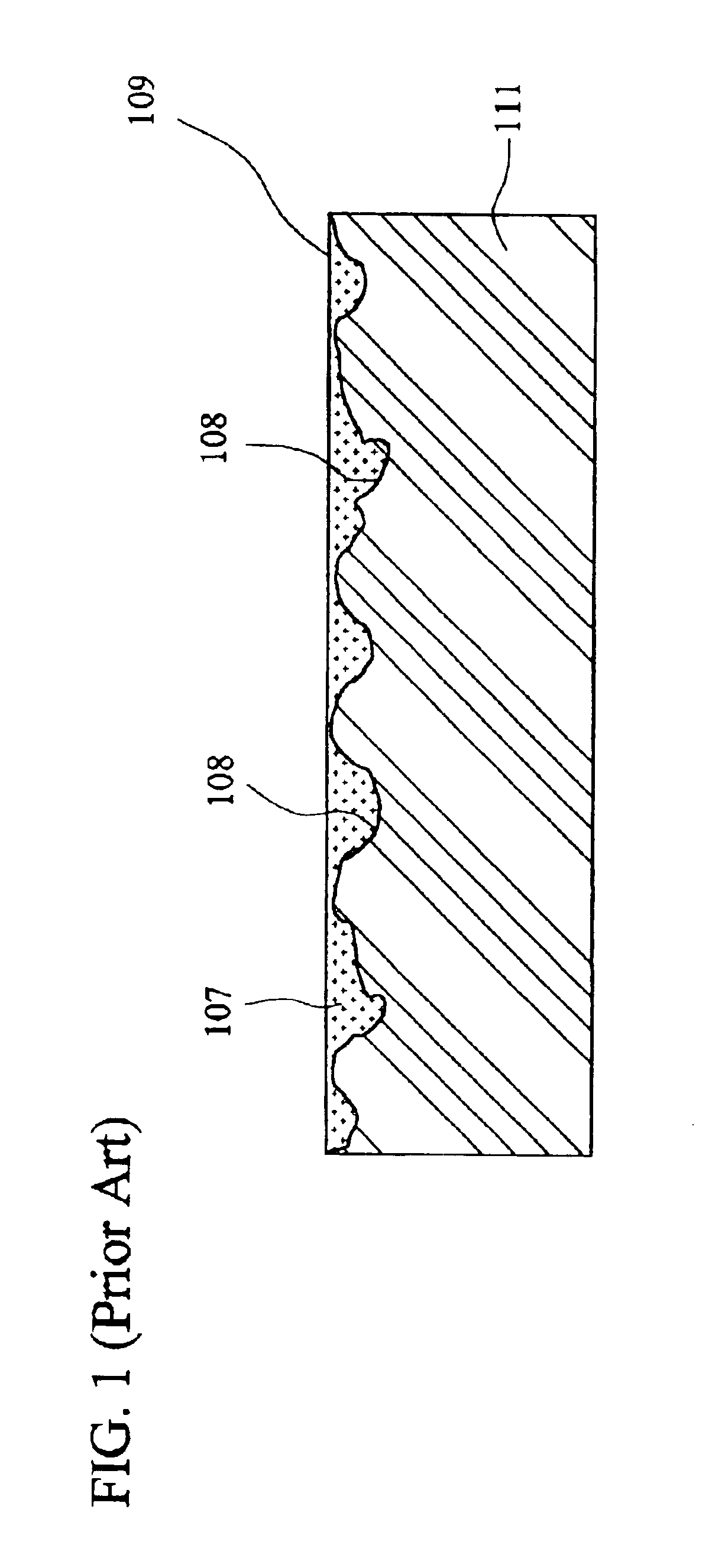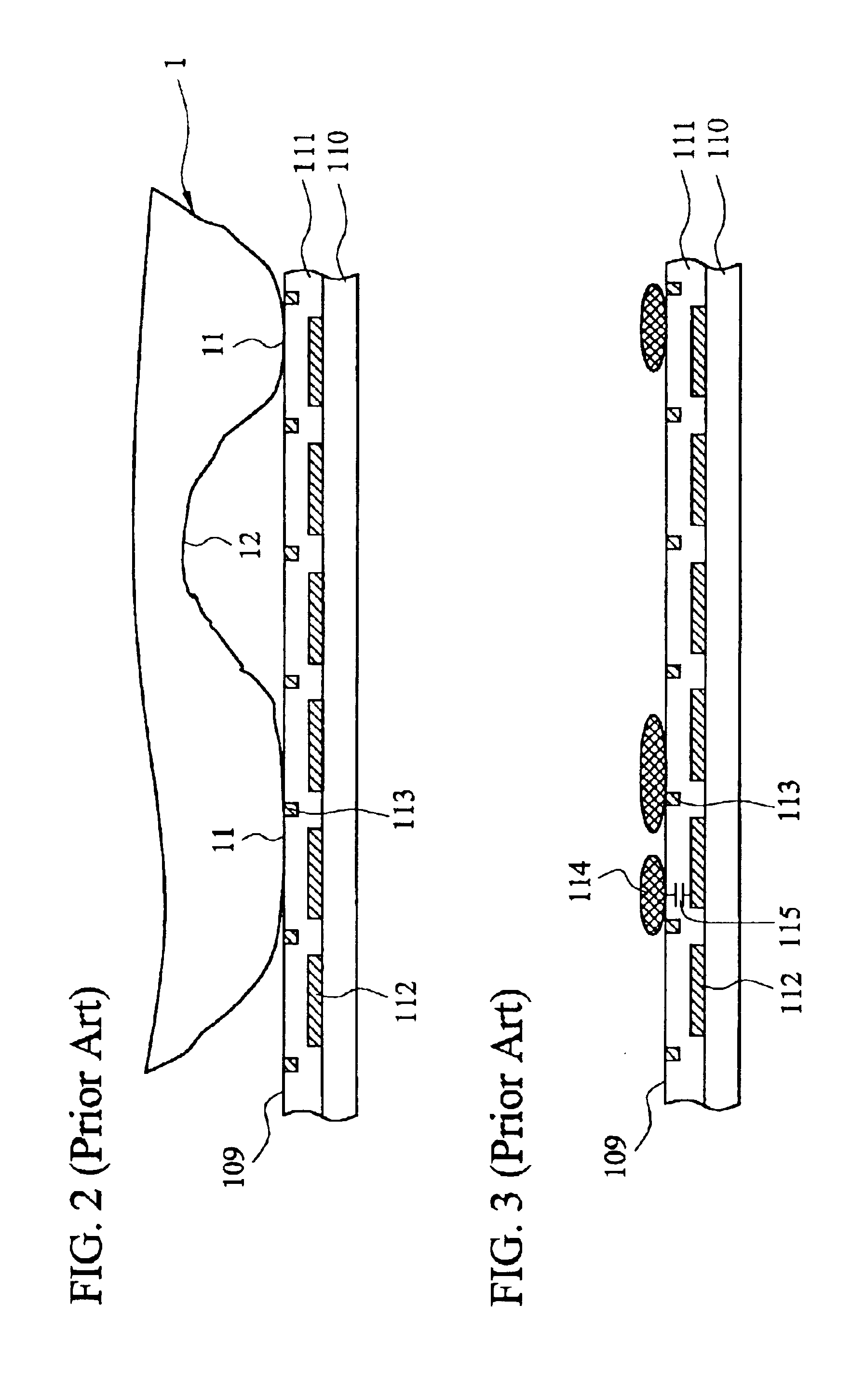Capacitive fingerprint sensor against ESD damage and contamination interference
- Summary
- Abstract
- Description
- Claims
- Application Information
AI Technical Summary
Benefits of technology
Problems solved by technology
Method used
Image
Examples
first embodiment
[0039]FIG. 5 is a partially schematic top view showing the capacitive fingerprint sensor according to the invention. FIG. 6 is a cross-sectional view showing the capacitive fingerprint sensor taken along a line 6—6 of FIG. 5. Referring to FIGS. 5 and 6, the capacitive fingerprint sensor 2 of the invention basically includes a silicon substrate 21 having integrated circuits, a plurality of plate electrodes 22, a metal mesh 23, a plurality of ESD (electrostatic discharge) units 24, a plurality of bonding pads 25, and a protection layer 26. The plate electrodes 22 are arranged on the substrate 21 in a form of a 2D array. The metal mesh 23 surrounding each of the plate electrodes 22 is formed between the plate electrodes 22 and is flush with the plate electrodes 22. In detail, the metal mesh 23 crisscrosses between the plate electrodes 22 and is positioned in the spacings between the plate electrodes 22. The plate electrodes 22 are separated from the metal mesh 23 by predetermined spaci...
second embodiment
[0046]FIG. 9 is a schematic top view showing the capacitive fingerprint sensor according to the invention. The sensor of FIG. 9 is similar to that of FIG. 5 except for the difference residing in that each ESD unit 24 of FIG. 9 is only adjacent to two sacrificial electrodes 22S. That is, each of the two adjacent plate electrodes 22 sacrifices a region to be used by the ESD unit 24.
third embodiment
[0047]FIG. 10 is a schematic top view showing the capacitive fingerprint sensor according to the invention. The sensor of FIG. 10 is similar to that of FIG. 5 except for the difference residing in that each ESD unit 24 of FIG. 10 is only adjacent to four sacrificial electrodes 22S. That is, each of the four adjacent plate electrodes 22 sacrifices a region to be used by the ESD unit 24.
[0048]FIGS. 11A and 11B show the sensed results of the capacitive fingerprint sensor of the invention before and after the ESD testing, respectively. The test condition adopted in the invention resides in that + / −20 KV are applied ten times in the air mode with an interval of one second. Compared FIG. 11A to FIG. 11B, the sensing result of FIG. 11B after the test is not visibly damaged, which means that the sensor still can work normally after the test. Consequently, the fingerprint sensor of the invention has the ability against ESD damage up to 20 KV, and the internal circuit of the sensor does not f...
PUM
 Login to View More
Login to View More Abstract
Description
Claims
Application Information
 Login to View More
Login to View More - R&D Engineer
- R&D Manager
- IP Professional
- Industry Leading Data Capabilities
- Powerful AI technology
- Patent DNA Extraction
Browse by: Latest US Patents, China's latest patents, Technical Efficacy Thesaurus, Application Domain, Technology Topic, Popular Technical Reports.
© 2024 PatSnap. All rights reserved.Legal|Privacy policy|Modern Slavery Act Transparency Statement|Sitemap|About US| Contact US: help@patsnap.com










